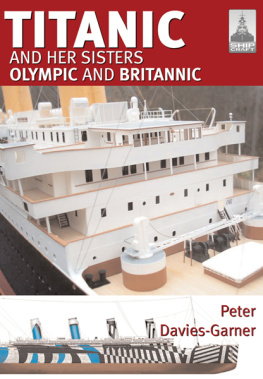T he little four-wheelers live on risk. They endanger themselves. They endangered us. If youre in a big truck, theyre around you like gnats. Theyre at their worst in the on-ramps of limited-access highways, not to mention what they do on horse-and-buggy highways. They do the kissing tailgate. They do passing moves over double yellow lines. They make last-second break-ins from stop signs on feeder roads. The way they are operated suggests insufficiency in, among other things, coordination, depth perception, and rhythm. When I went to bad-driver school, the opening lecturer did not imply any such flaws in his students. He was a real bear. He wore blue-and-yellow trousers and a badge. In a voice he fired like a .45, he began by asking us, How many of you people think youre good drivers?
We had all been singled out in four-wheelers. My own car had a tendency to ignore stop signs without previously sensing the presence of bears. It lapsed in other ways as well. After I reached twelve points, I was offered admission to the New JerseyDriver Improvement Program, on the following voluntary basis: enroll or lose your license. Among the twenty-five people in the class, two smart-asses stuck up their hands in positive response to the instructors question. He looked them over, then swept the room. Well, you must all be good drivers, he said. If you werent, youd be dead.
Then he darkened the room and rolled a film showing cars hitting cars in on-ramps. A, looking left, accelerates. B, looking left, accelerates. B rear-ends A, because A hesitated, and B was still looking to the left. This primal accident, the figure eight of bad driving, was the base of a graphic montage that ended in high-speed collision and hideous death on the road.
These memories of bad-driver school ran through me in eastern Oregon after Don Ainsworth, at the wheel of his sixty-five-foot chemical tanker, gave some air horn to a step van that was coming fast up an on-ramp on a vector primed for a crash. A step van is a walk-in vehicle of the UPS variety, and, like all other four-wheelers, from Jettas to Jaguars, in Ainsworths perspective is not a truck. FedEx, Wonder Bread, Soprano Sand-and-Graveltheyre not trucks, theyre four-wheelers, even if they have six wheels. A true truck has eighteen wheels, or more. From Atlanta and Charlotte to North Powder, Oregon, this was the first time that Ainsworth had so much as tapped his air horn. In the three thousand one hundred and ninety miles I rode with him he used it four times. He gave it a light, muted blast to thank a woman in a four-wheeler who helped us make a turn in urban traffic close to our destination, and he used it twice in the Yakima Valley, flirting with a woman who was wearing a bikini. She passed us on I-82, and must have pulled over somewhere, because she passed us again on I-90. She waved both times the horn erupted. She was riding in a convertible and her top was down.
If the step van had hit us it would only have been inconvenient, the fact notwithstanding that we were hauling hazmats. The step van weighed about ten thousand pounds and we weighed eighty thousand pounds, minus a few ounces. Ainsworth said he could teach a course called On-Ramp 101. We get many near-misses from folks who cant time their entry. They give you the finger. Women even give you the finger. Can you believe it?
I could believe it.
Four-wheelers will pass us and then pull in real fast and put on their brakes for no apparent reason, he said. Four-wheelers are not aware of the danger of big trucks. Theyre not aware of the weight, of how long it takes to bring one to a halt, how quickly their life can be snuffed. If you pull any stunts around the big trucks, youre likely to die. Im not going to die. You are.
We happened to be approaching Deadman Pass. We were crossing the Blue Mountainson I-84, the Oregon Trail. He said, Before you know it, well be sitting on top of Cabbage. Then were going to fall down. He had mentioned Cabbage Hill when we were still in the Great Divide Basin. He mentioned it again in Pocatello. After crossing into Oregon and drawing closer, he brought it up twice an hour. Its the terrific hill we fall down before we come to Pendleton. Pretty treacherous. Switchbacks. Speed restricted by weight. Youll see guys all the time with smoke flying out the brakes or even a flameout at the bottom.
From the Carolina piedmont to Hot Lake, Oregonacross the Appalachians, across the Rockieshe had not put his foot on the brake pedal on any descending grade. In harmony with shrewd gear selection, this feat was made possible by JakeBrakesa product of Jacobs Vehicle Systems, of Bloomfield, Connecticut. Ainsworth called the device a retarder, genericallyyoure turning a diesel engine into an air compressor. On a grade we descended in Tennessee, he said, If you choose your gear right, and your jakes on maxi, you can go down a hill with no brakes. It saves money. It also lengthens my life. Crossing the summit of the Laramie Range and addressing the western side, he geared down from twelfth to eighth and said, I wont use one ounce of brake pressure. The jake is on maxi. As big trucks flew past usdry boxes, reefershe said, These guys using brakes with improper gear selection dont own the tractor or the trailer. Using brakes costs money, but why would they care? Ainsworth owns the tractor and the trailer. As he glided onto the Laramie Plains, he went back up to eighteenth gear: the goinghome gear, the smoke hole; when you got into this gear in the old days, your stacks would blow smoke. On a grade at Hot Lake, however, he tried fifteenth gear, and his foot had to graze the pedal. He seemed annoyed with himself, like a professional golfer who had chosen the wrong club.
And now we were about to fall down Cabbage. In ten miles, we would drop two thousand feet, six of those miles on a six-per-cent grade. Through basaltic throughcuts we approached the brink. A sign listed speed limits by weight. If you weighed sixty thousand to sixty-five thousand pounds, your limit was thirty-seven miles an hour. In five-thousand-pound increments, speed limits went down to twenty-six and twenty-two. Any vehicle weighing seventy-five thousand pounds or moree.g., this chemical tankerwas to go eighteen or under. A huge high view with Pendleton in it suddenly opened up. I had asked Ainsworth what makes a tractor-trailer jackknife. He had said, Youre going downhill. The trailer is going faster than the tractor.The trailer takes over. Its almost impossible to bring yourself out of it. Brakes wont do anything for you. Its a product of going too fast for the situation. It can happen on a flat highway, but nine times out of ten its downhill. The escarpment was so steep that the median widened from a few feet to one and a half miles as the northbound and southbound lanes negotiated independent passage. Ainsworth had chosen eighth gear. He said, Most truckers would consider this way too conservative. That doesnt mean theyre bright. Oregon is the only American state in which trucks are speed-restricted by weight. Feet off both pedals, he started the fall down Cabbage praising the truck for good jake and himself for nice gear selection. My ears thickened and popped.


















